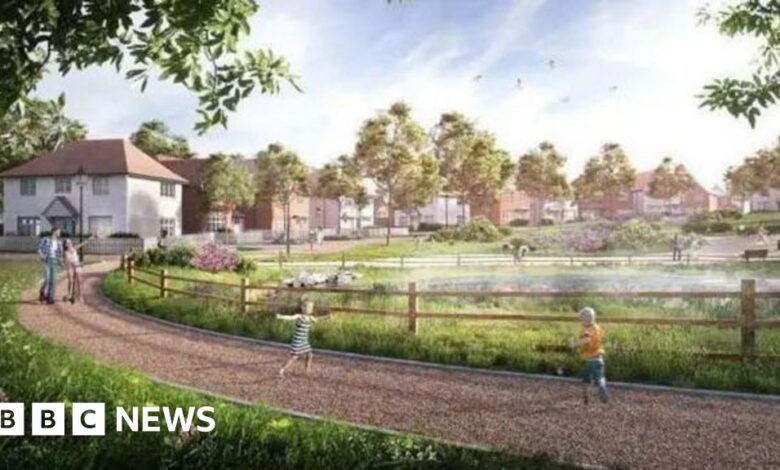Sittingbourne: Government steps in over housing plan row

Plans for a “new town” in Kent have been sent to the government for the final decision after an intervention by the housing secretary.
Swale Borough Council had been due to decide on Thursday whether 8,400 homes could be built near Sittingbourne, but said the government intervened just hours before the meeting.
Planning officers had previously recommended the council should vote against the project, with campaigners saying it would overwhelm current infrastructure and harm the environment, the Local Democracy Reporting Service reported.
But developer Quinn Estates claims the proposals are “entirely suitable” and would bring “significant benefits to the surrounding area as a whole”.
The council received a letter from the government just three hours before the meeting was due to start, explaining that Angela Rayner, the secretary of state for housing, communities and local government, had called a local inquiry into the plan.
The development is split into two parts.
Up to 7,150 homes, a community space, a hotel, a new rubbish tip, and primary and secondary schools are planned for the larger site surrounding Sittingbourne.
The smaller site, known as Teynham West, is planned to include up to 1,250 homes including sheltered and extra care accommodation, a primary school and the Bapchild section of a northern relief road – which is already in the local plan.
“The proposals are entirely suitable for the site in terms of land use, amount of development, access, layout and appearance,” said a spokesperson for Quinn Estates.
However, the bid has attracted more than 700 letters of objection.
Carol Goatham, of Farm Fields & Fresh Air, said: “Our sewage works are already struggling, we know that our GPs are already struggling.
“This proposal joins up seven outlying villages on the edge of Sittingbourne between Sittingbourne and Teynham, and there’s a rural way of life here.”
The housing secretary will have the final say on the plans and is expected to announce her decision by February.




